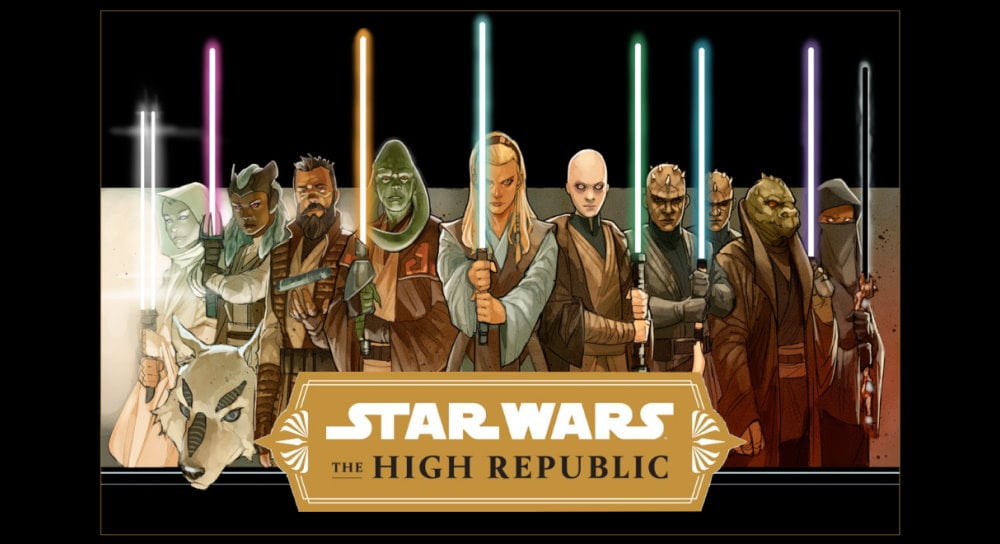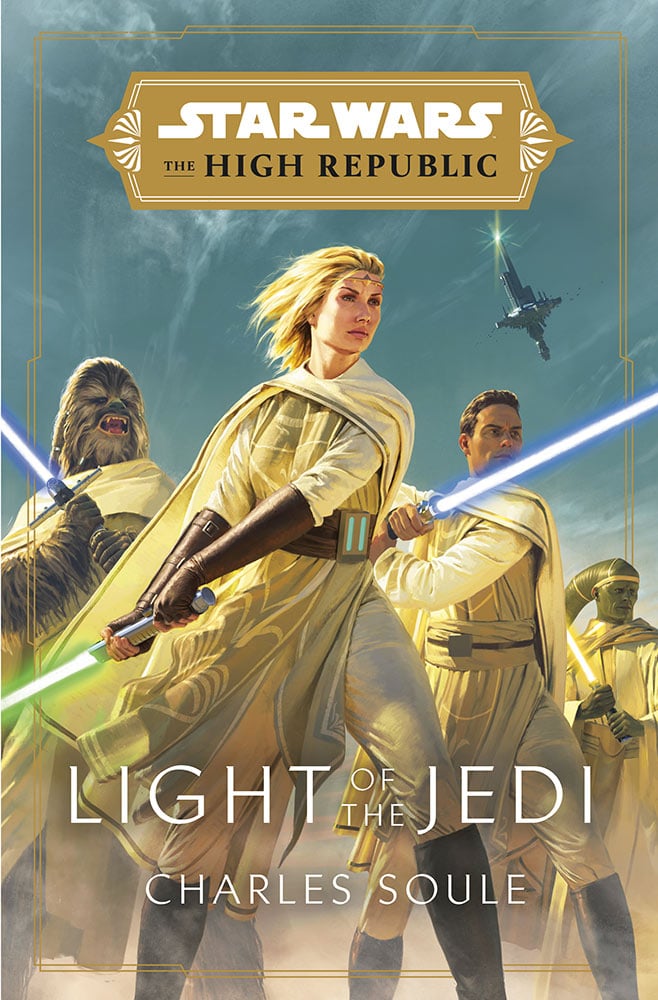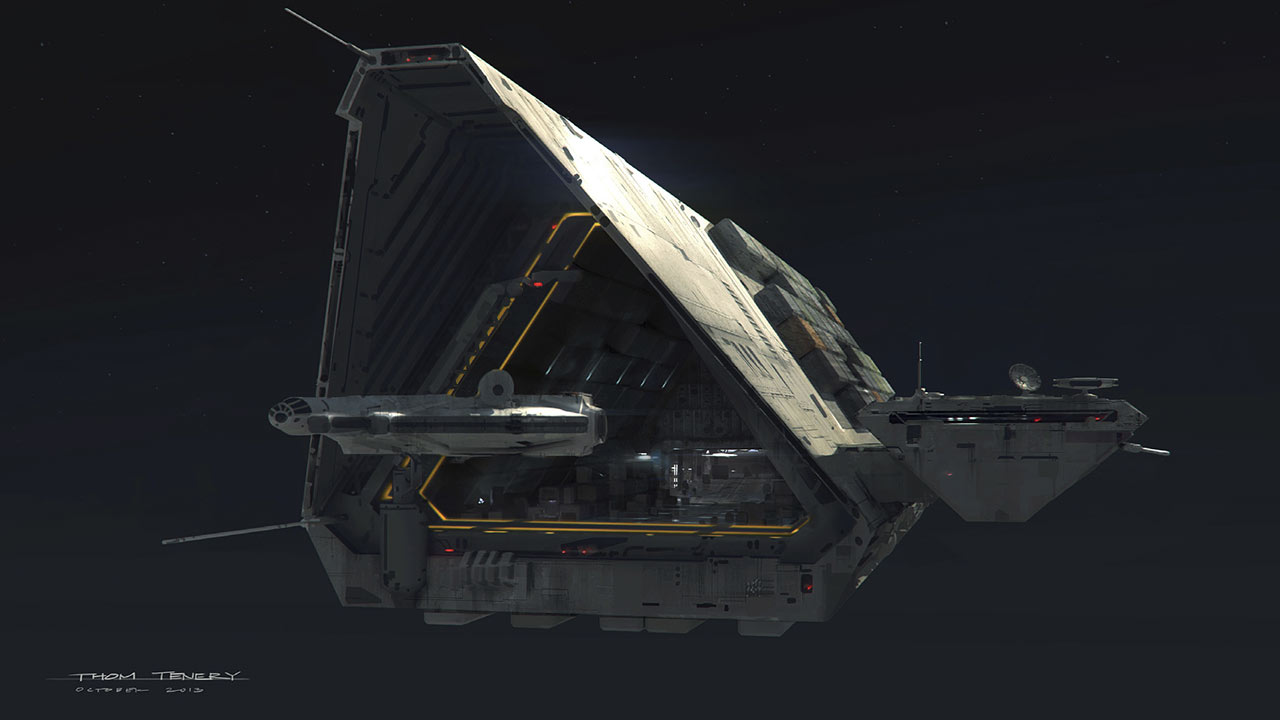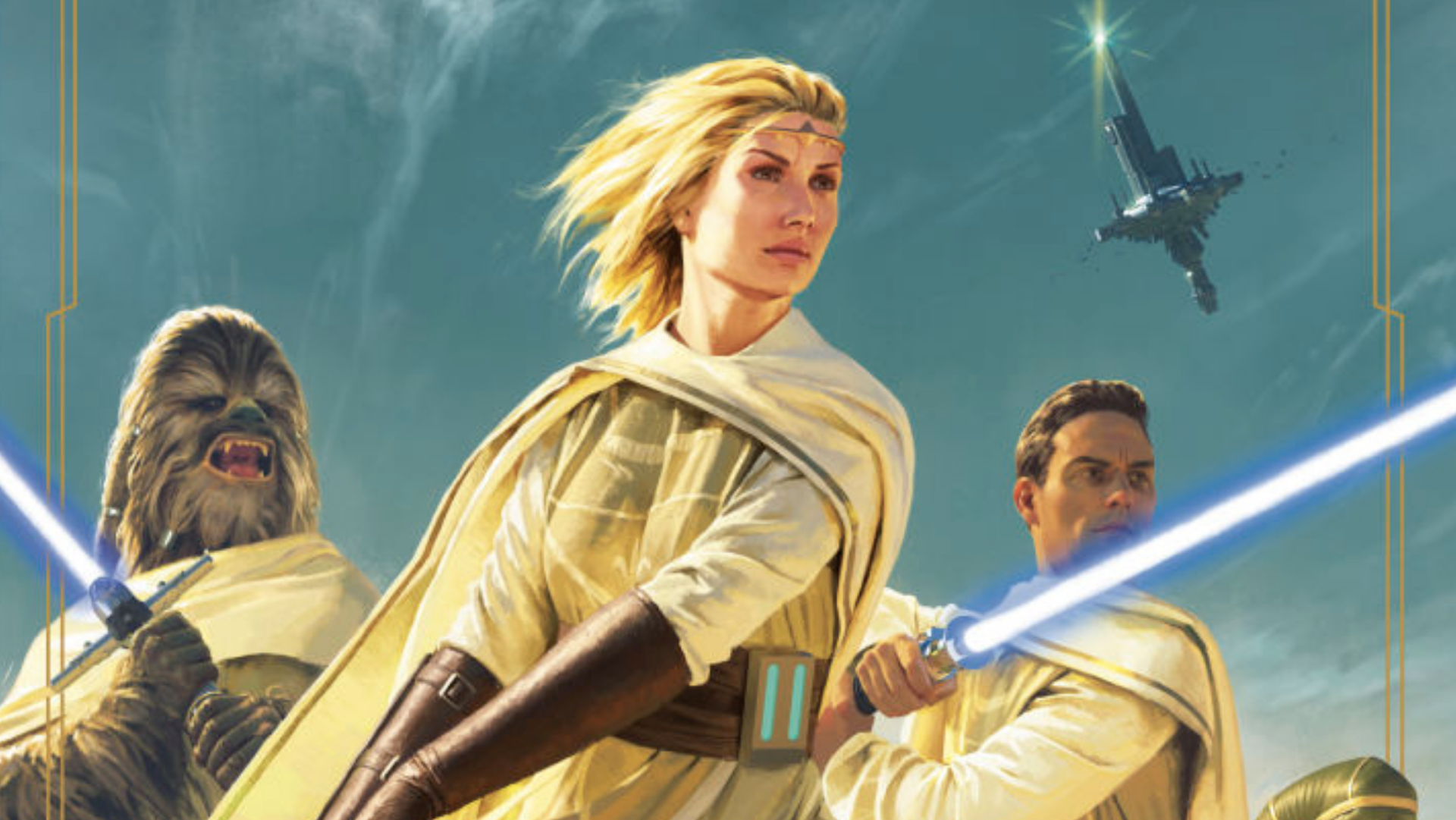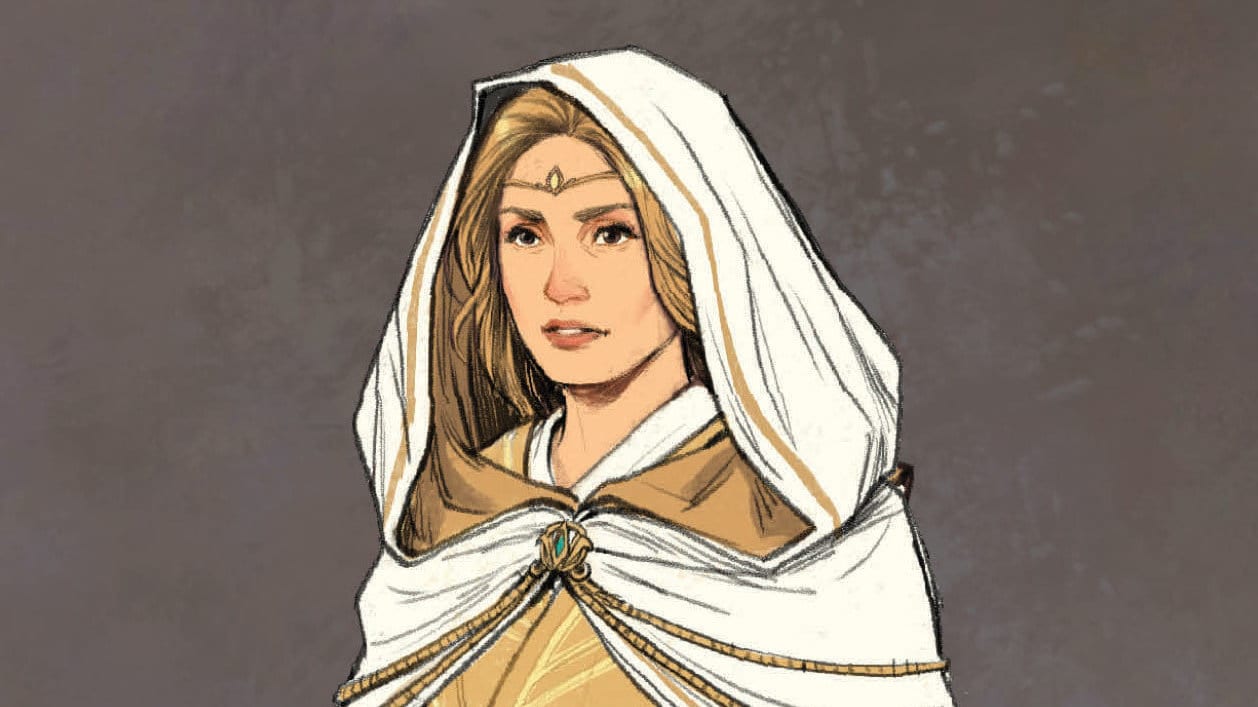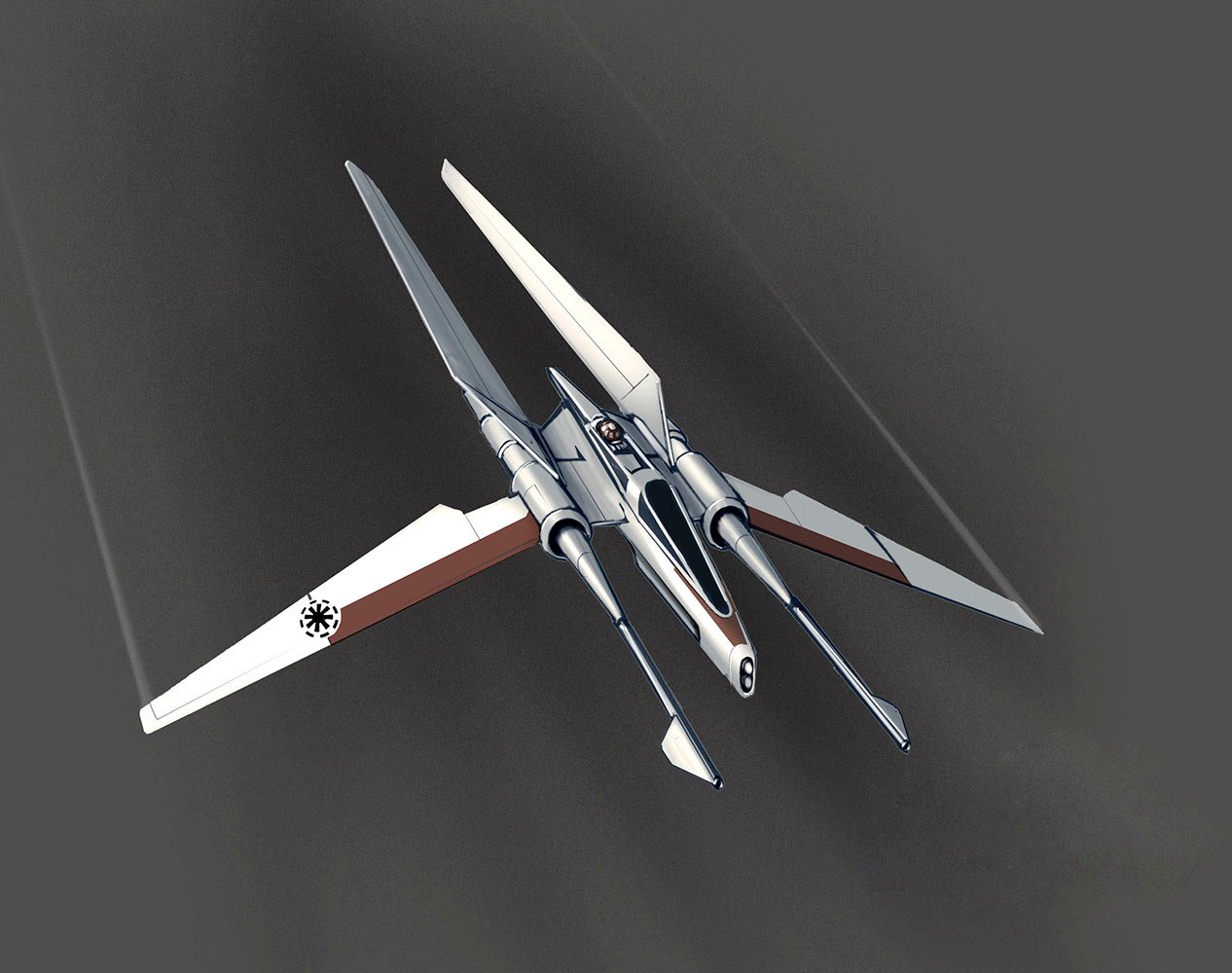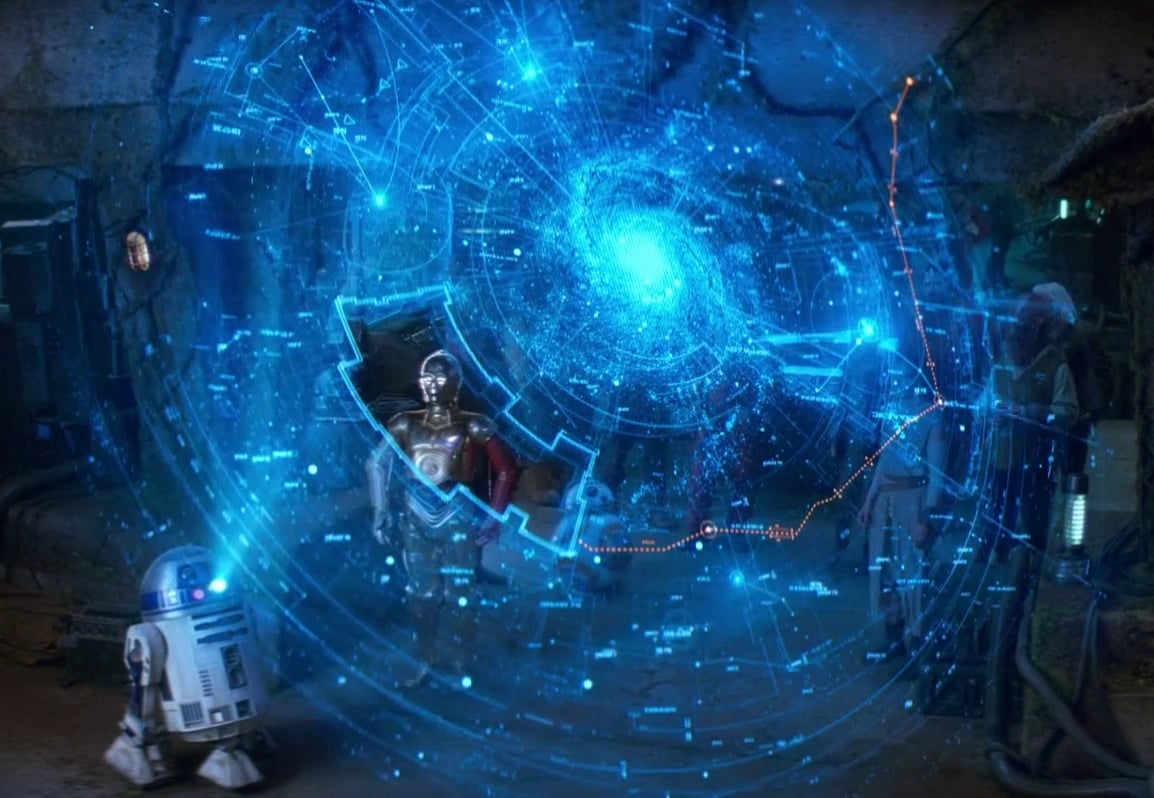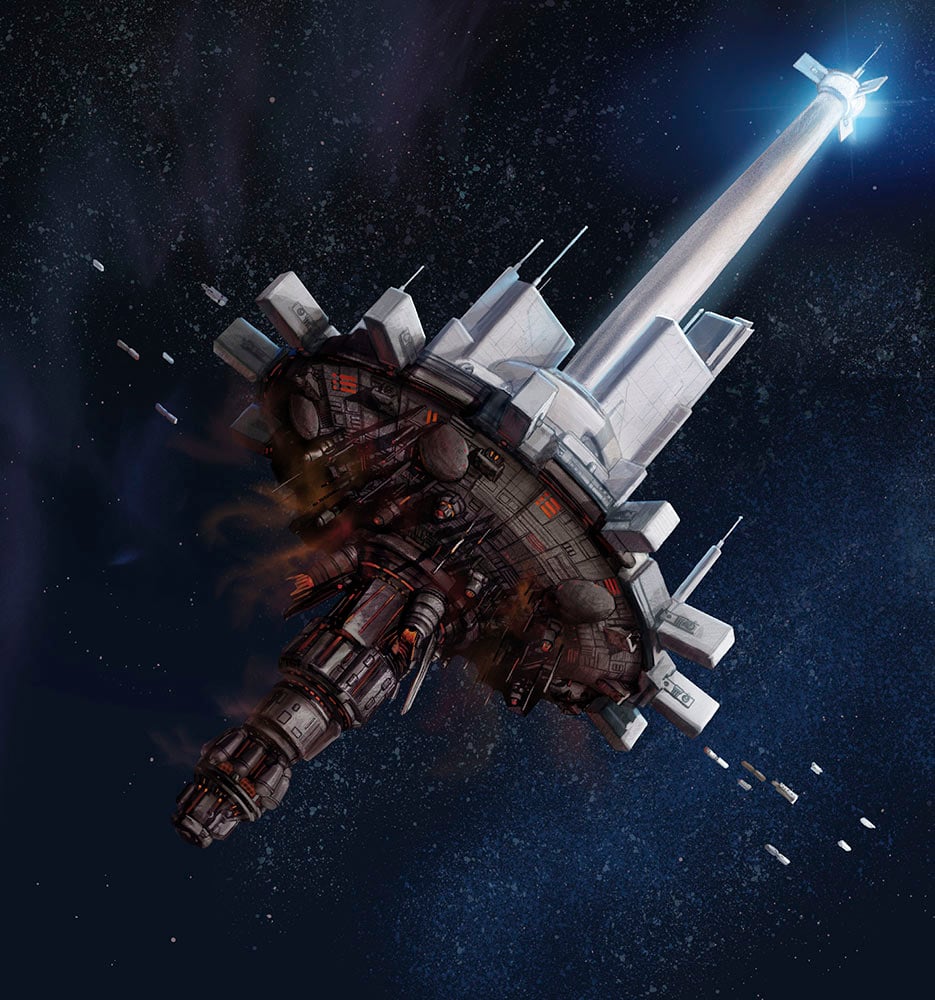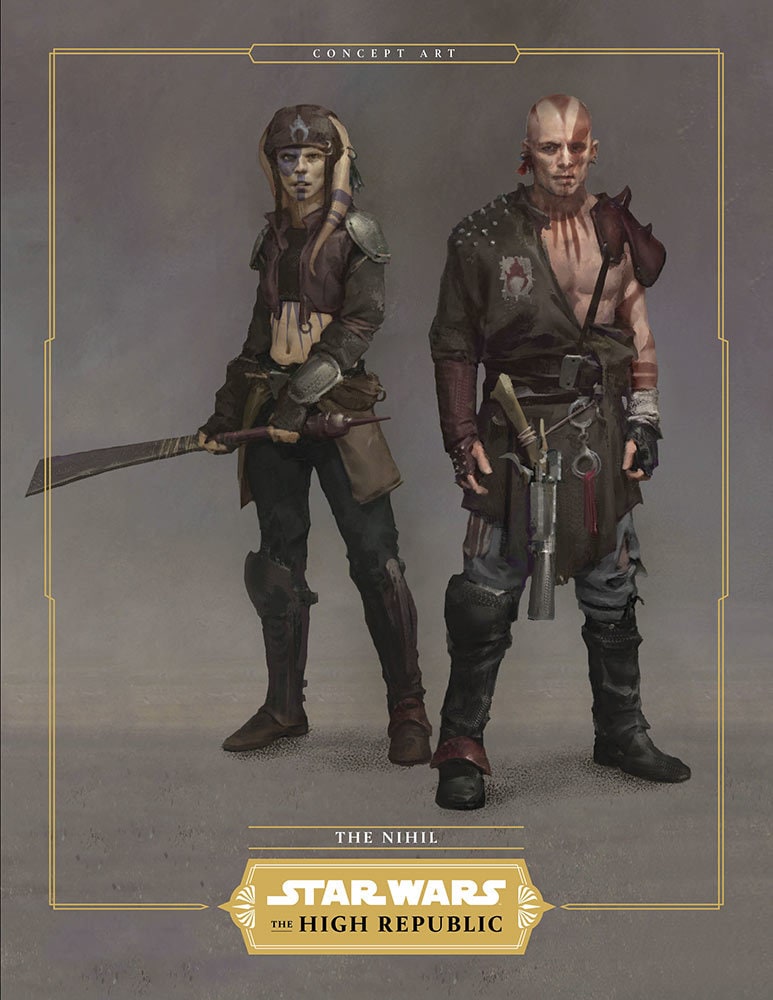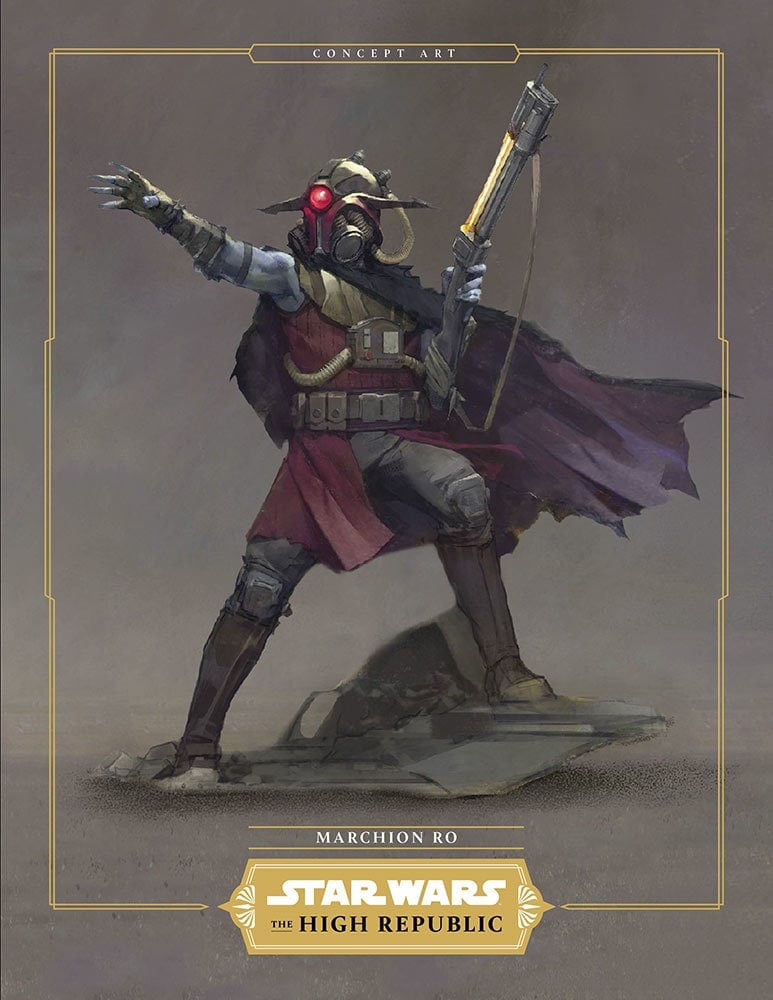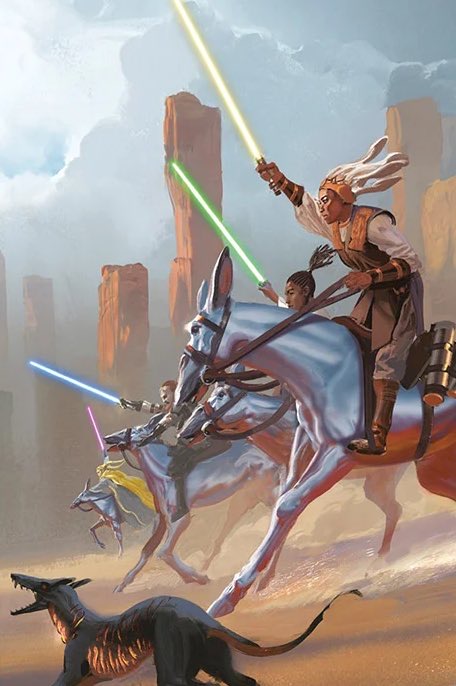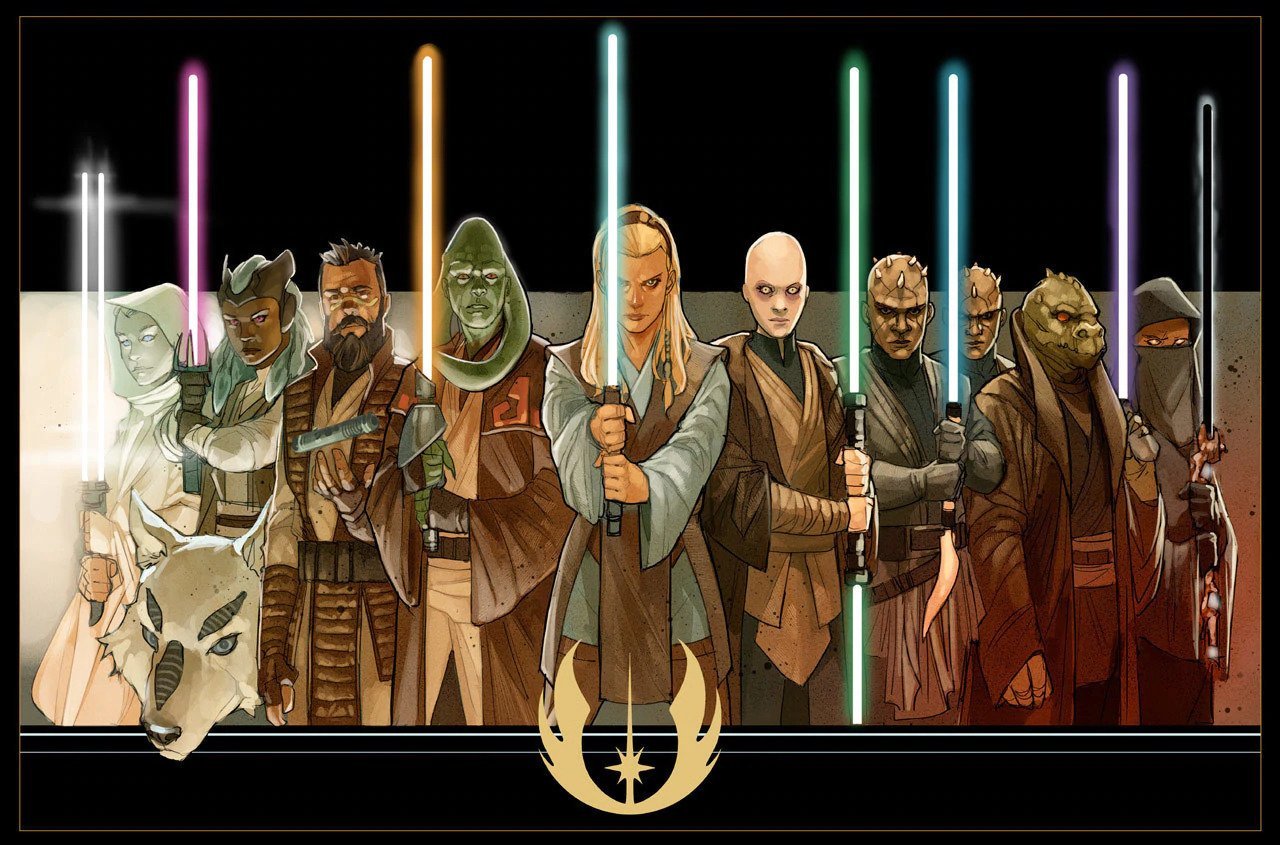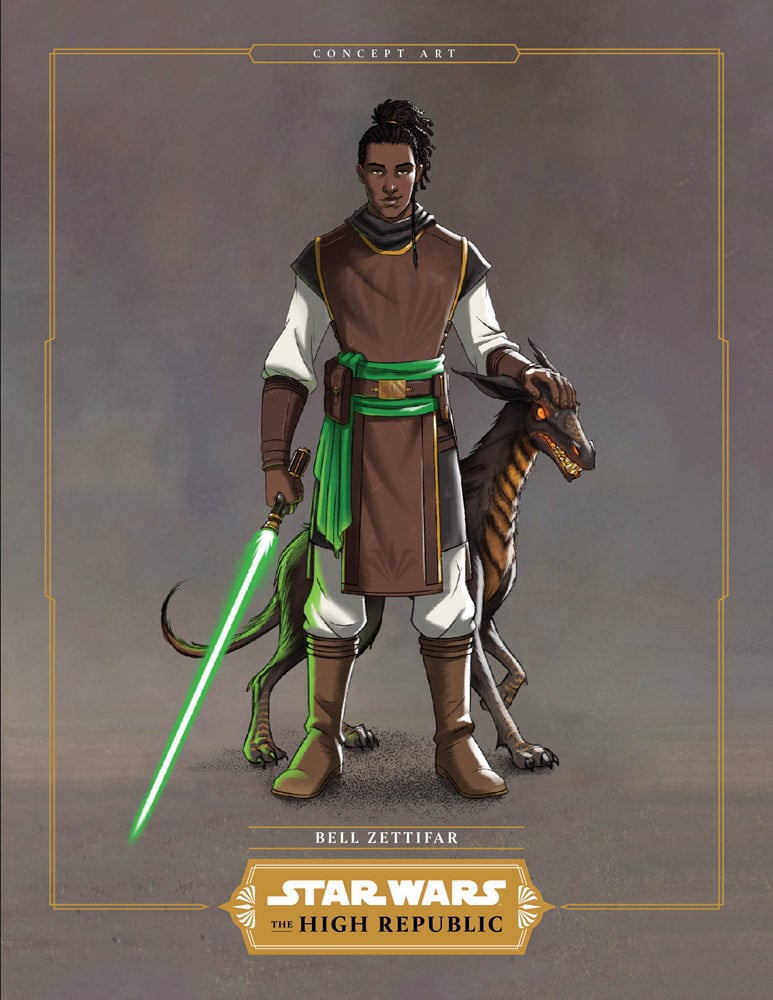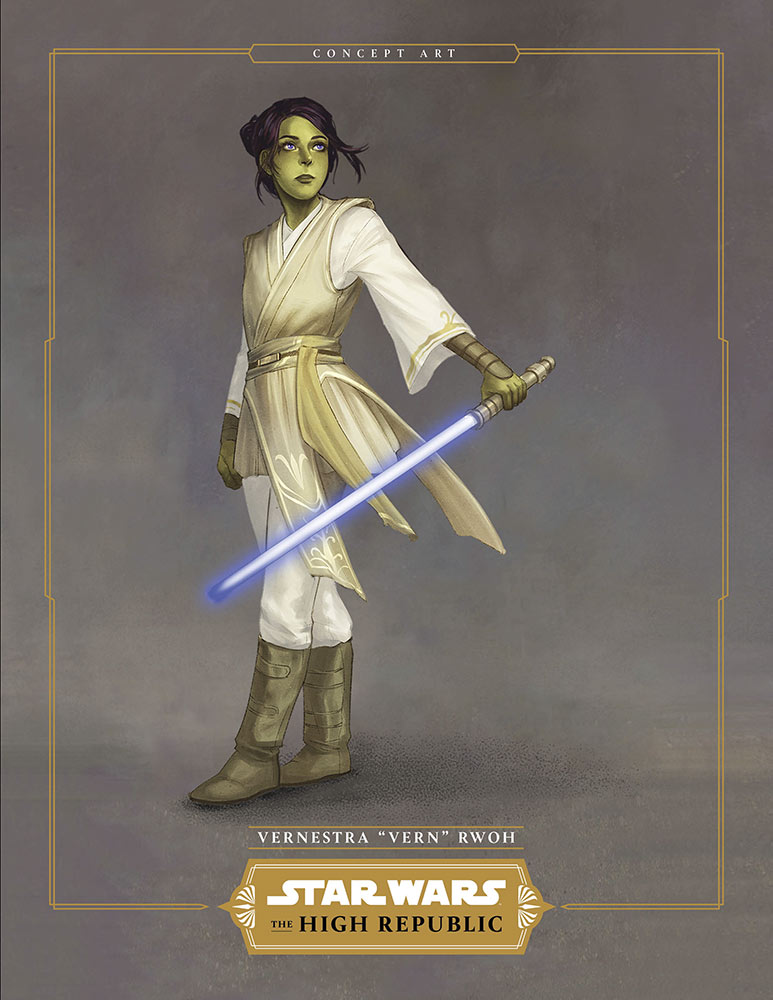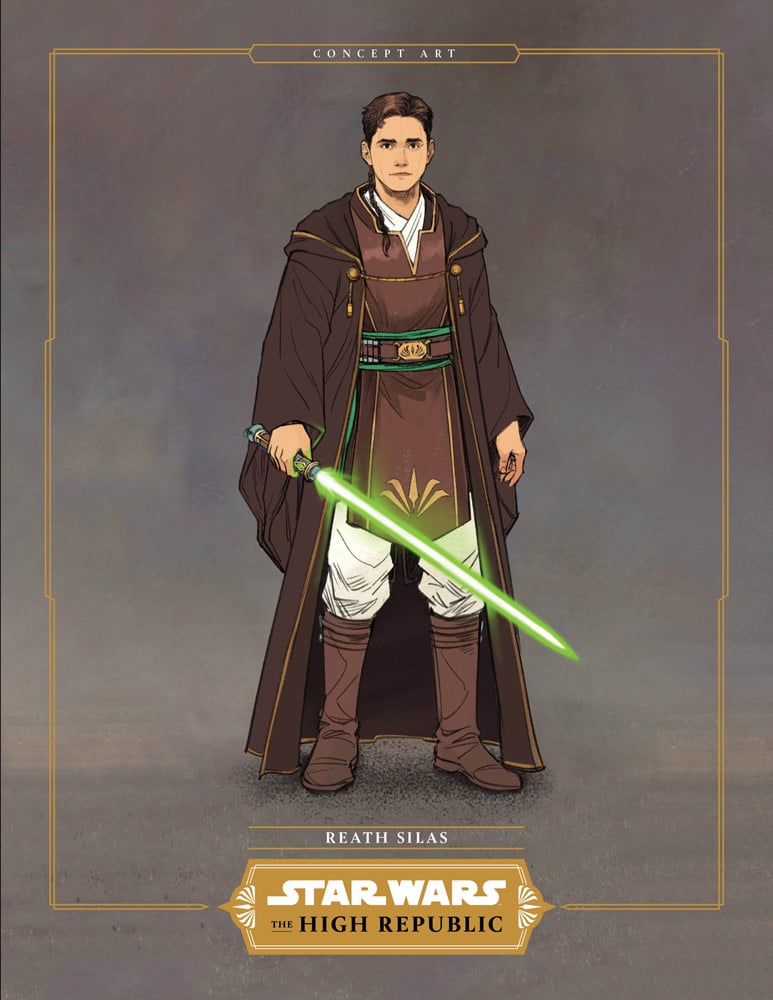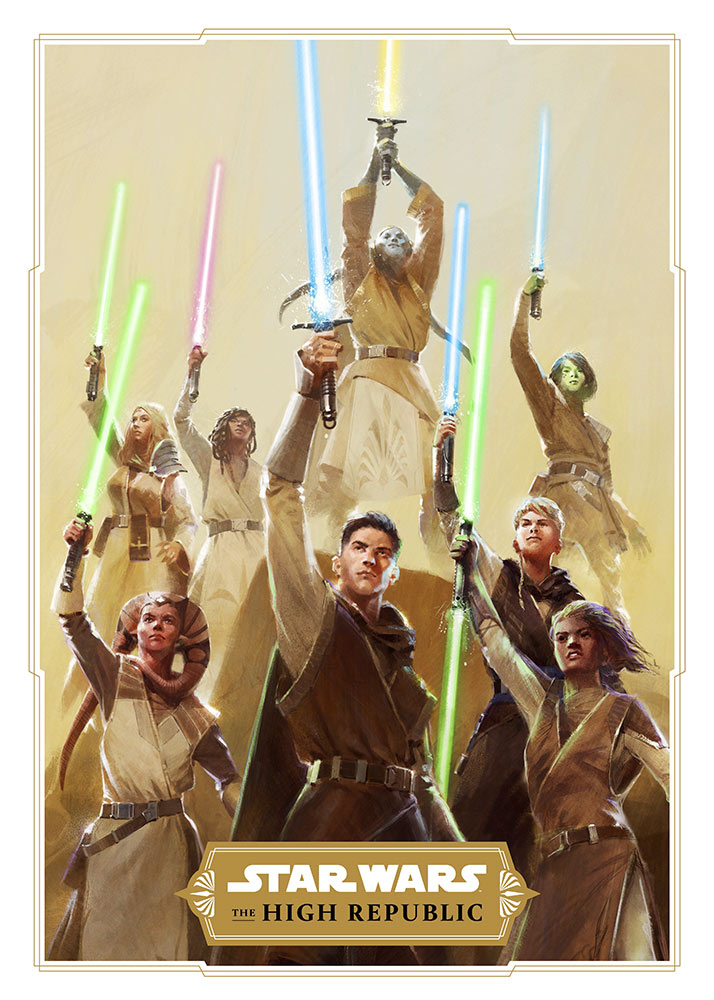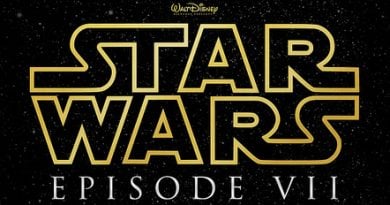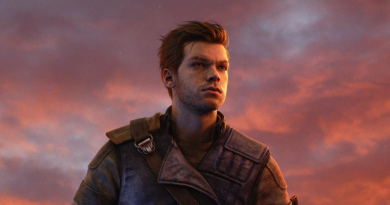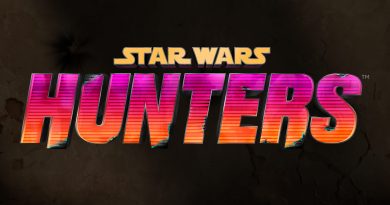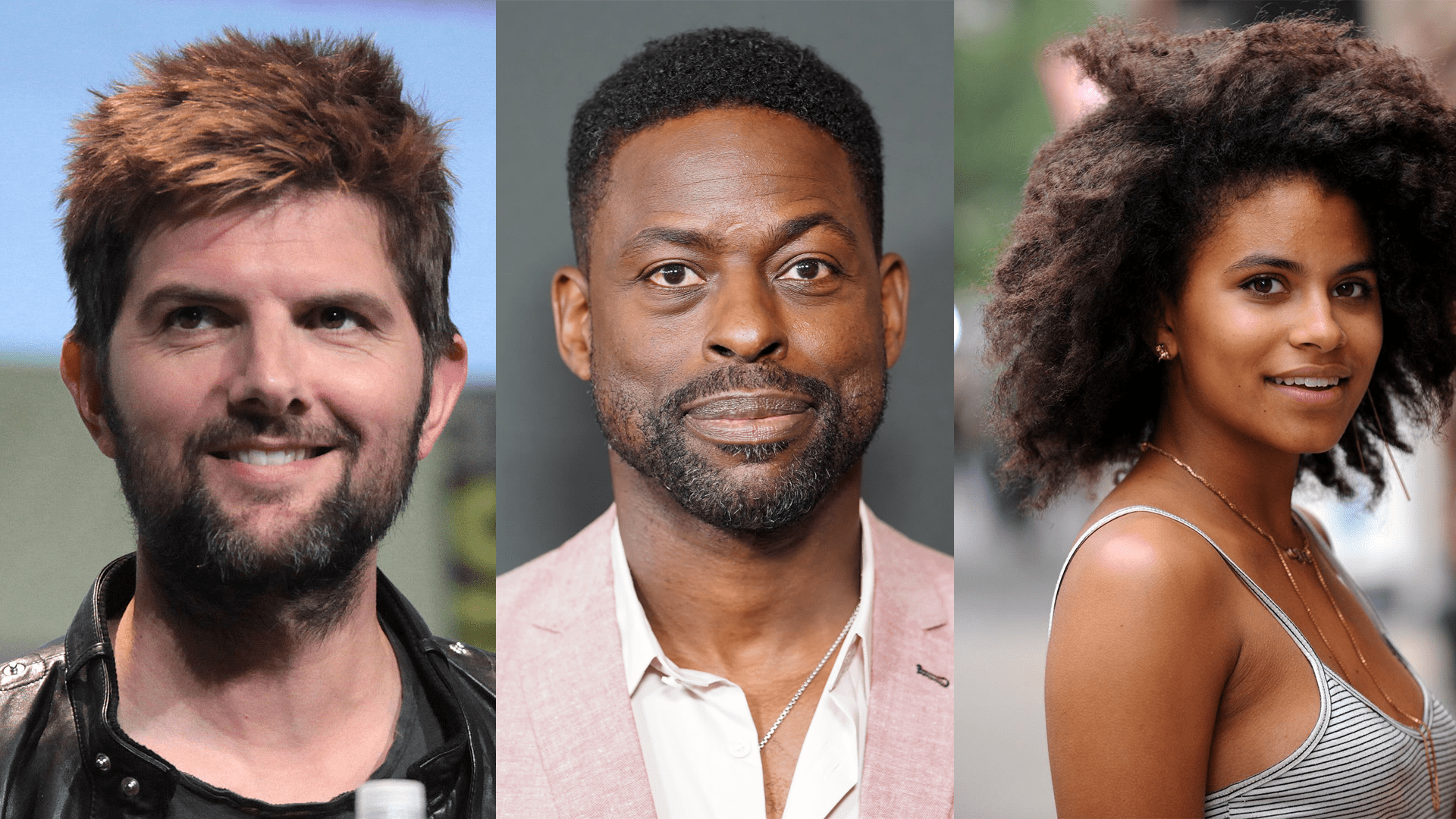First Impressions: Heroes Rise as Hope is Tested in The High Republic
Next month, The High Republic will usher in a new era of Star Wars storytelling using the mediums of novels, comics, and television. This is an uncharted era of the galaxy far, far away. We were lucky to receive early copies of the three novels in the series: Light of the Jedi by Charles Soule, A Test of Courage by Justina Ireland, and Into the Dark by Claudia Gray. Out of interest in avoiding spoilers, full reviews of these books won’t come out until their publication, but there are some overall impressions about what the Republic is like, what to expect from the Jedi, and the havoc the Nihil unleash upon the galaxy. I won’t reveal any major spoilers but I will talk about broad story points, just to warn anyone hoping to go in completely fresh.
The imagery and tone of the extensive marketing campaign convey an era of peace and hope. While that’s true when the story opens, the tranquility is smashed by the end of the first chapter. Light of the Jedi by Charles Soule establishes a disaster which I imagine will loom over many of the stories of the era.
The cargo and passenger hauler, Legacy Run (pictured above), mysteriously breaks apart in hyperspace transit, sending not only debris but sections of the ship containing living passengers. It’s a disaster scenario no one in the galaxy has ever considered or planned for but the consequences become apparent quickly once fragments of the ship make crash into inhabited systems. At the rate of speed with which these fragments travel, they have the potential to destroy worlds. The first system experiencing the fallout is the Hetzal system, a key food supplier for the Outer Rim. The mystery of what caused this disaster is a huge part of the plot in Light of the Jedi, and has huge ramifications for the galaxy and it’s ability to safely travel.
Fortunately for those in the Hetzal system, the Jedi arrive to assist. It’s nothing short of a superhero entrance. I’m going to be careful to avoid spoilers, as this scene dominates the entire first section of the book. It moves incredibly fast, jumps all over the Hetzal system as different Jedi show up from across the galaxy, and not everyone makes it out alive. Right away, these Jedi are different. Even in terrible crisis, their connection to the Force feels much more serene than the Jedi of the prequel era. Author Charles Soule is great at keeping the suspense for the reader while almost providing them little Zen-breaks from the action when the Jedi arrive. It’s hard to describe but even in the heightened tension, the Jedi project calm and confidence.
Part of the reason the Jedi can respond to the ticking time bomb disaster is because of how they communicate. Jedi Avrar Kriss has the ability to detect and connect Jedi through the Force, strengthening their bond and establishing a communication network through the Force. Her ability is demonstrated extensively in this opening section of the book. Avrar is not a master but she’s a seasoned Jedi who the rest of the order respects because of her ability to coordinate their response through the Force. Again, serenity in the Force comes through these moments, even when an entire star system is on the line.
Jedi use ships called Vectors, designed specifically for their piloting abilities. The Jedi arrive in these Vectors and pilot them in some pretty fantastic scenarios. Again, I really don’t want to spoil anything because Soule is so good at writing action. The Jedi work in coordination to contain the fragments of Legacy Run torpedoing several key planets and facilities. The Vectors show up several times in the book but the opening pages is where they shine. And the Jedi use their lightsabers as a key to unlock the ship’s weapons systems, implying a much more civilized age.
And protecting the Hetzal system isn’t as simple as shooting pieces of debris out of the sky. Pieces of the Legacy Run, containing living passengers, begin to enter the Hetzal system. For the Jedi, any loss of life is a failure, so they set forth on some pretty incredible rescue flights that would make Han Solo nervous. Charles Soule is relentless with the action and suspense in these opening chapters and by the time the Hetzal operation is over, it’s hard to breathe easy. But the Legacy Run crisis isn’t contained to Hetzal, since the debris are caught in hyperspace they can potentially exit anywhere in the galaxy.
The possibility of more debris being present in hyperlanes prompts Chancellor Lina Soh to close hyperspace routes across the galaxy. Effectively, it shuts down transit and commerce in the galaxy. There are many real world parallels in Soule’s writing, where society reacts to what hyperspace restrictions mean for the galaxy – and how long it will be until they can be lifted. The galaxy’s prosperity is apparent and this crisis interrupts a period of jubilation, but the chancellor takes it seriously enough to halt commerce for the sake of safety. And the destruction avoided in the Hetzal system returns to other systems who are not as lucky to have Jedi rescuers arrive in the nick of time. Some truly horrific tragedies occur because of this disaster. Though Soh is a character brimming with optimism, her message of “We are all the Republic” borders on uncomfortable nationalism and populism, especially for those in the Outer Rim who are still wary.
For Chancellor Soh and the Jedi, the crises interrupted their unveiling of Starlight Beacon. This station is what both the Republic and the Jedi hope to use as a waypoint for weary travelers in the Outer Rim. It’s an outreach to other systems not yet part of the Republic. When the crisis hit, many people in the order and the Republic hoped to unveil it. The Jedi even built a temple on the station. As much as Starlight Beacon is discussed in these books, there is still a lot to learn. We know author Cavan Scott’s forthcoming Marvel series, The High Republic, will take place on this station. These first three novels touch on it, but this is still uncharted territory. The important thing we are left with is how monumental a project this is for the Republic and the Jedi…and they aren’t the only ones who know it will change the galaxy. The Nihil have taken notice.
Every story needs a villain and The High Republic finds their villains in the Nihil. Led by the mysterious Marchion Ro (called “The Eye”), the Nihil are a group of marauders who go from smuggling and piracy to galactic terrorists in Light of the Jedi. We’ve never seen villains like these. There is no nuance here, these are just straight-up bad people who have no regard for life or peace, only to get what’s theirs and set the rest on fire. At no point, in any of the three books, do they show remorse or hesitation when it comes to doing some awful things. There are moments here which will chill your blood or boil it, depending on which of the Nihil are in action.
Despite their chaotic resemblance to the unchecked antagonists of Mad Max’s Warboys or Firefly’s Reavers, the Nihil have a strict hierarchy in their organization. Marchion Ro sits atop, only because he has a unique knowledge of hyperlanes and is able to calculate routes between stars no one else in the galaxy can. Organized by commanders called Tempest Runners who oversee their own ships and marauders broken into Clouds, Storms and Strikes, the Nihil function only by the mantra “Rule of three”, where everyone divides the plunder of their brutal attacks. The Nihil use the tragedy of the Legacy Run to tighten their control of the Outer Rim and further the mysterious ambitions of Marchion Ro. As we learn more about Marchion Ro, his larger plans and reasons for taking on the Republic and the Jedi become clear. And as the stories of each novel conclude, we see the Nihil become more unhinged and deadly.
The stage is set for the Nihil to evolve into a harrowing enemy of the Jedi. Their unique mastery of hyperspace gives them an advantage over everyone and Marcion Ro is working hard to increase it. We’ve learned through the Thrawn novels not every civilization in the galaxy far, far away rely on navicomputers for hyperspace travel. The Chiss used Force-sensitive beings called “Sky-walkers” and the Nihil have a similar approach. Hence, Marcion Ro’s interest in the Jedi and an arc which begins the journey to whatever story Leslye Headland will tell in her Disney+ series, Acolyte. Set to take place at the end of the High Republic era, this will likely be the endgame for Ro’s plans and whatever damage they cause the galaxy. The Nihil are promising villains but by the end of these three books, you’re only going to want more, because they are constantly changing.
And what about the Jedi? There are a lot of Jedi to love in these books. And I think everyone will have their favorites across the books. The Jedi are regarded in the galaxy similar to how Superman is regarded in Metropolis. Everyone knows who the Jedi are, that they have special abilities they use to help people, but most people have never seen them or seen them in action. In Light of the Jedi, Charles Soule introduces us to several. I recommend keeping a notepad handy because they all pop-up and disappear quickly. Soule had the difficult job rolling out all of these introductions while trying to keep the story moving. A Test of Courage by Justina Ireland and Into the Dark by Claudia Gray are smaller scale stories where you get to know a handful of Jedi much better.
Each Jedi has a unique connection to the Force and the reader gets to experience it. Since this is a new era of Jedi, hundreds of years before the ones we’ve met before, their outlook on the Force and their abilities is different than what we’re used to. The Jedi don’t seem as bound by dogma as the prequel era. Sure, there are still rules, but the Jedi don’t seem as terrified of exploring the Force as they did in the prequel era. We even learn masters of this era are free to study the Force however they wish. In that era, the dark side already had a foothold on the Force, diminishing their connection. In High Republic, the dark side is explored mostly in A Test of Courage and Into the Dark so far, though Light of the Jedi does end on a very ominous note of the dark disruption in the harmonious light of the Force.
My favorite Jedi we meet are a mix of padawans and old masters. Bell Zettifar is a great character to experience the events in Light of the Jedi. He’s the padawan of Jedi Loden Greatstorm and is learning as the two of them work through some of the crises. He’s capable but insecure because his master is very rigorous with his training and demands a lot of him. There isn’t tension between them but it’s easy to identify with Bell because he just wants to help during a chaotic time. He’s dealing with his own issues of self-worth while having to dig deep to help those in need.
Vernestra Rwoh (A Test of Courage) is the youngest Jedi to ever pass the trials. At age fifteen, she’s dispatched from the Outer Rim station to accompany a diplomatic contingent headed for Starlight Beacon. When their ship is destroyed by saboteurs, Vernestra is put into the difficult situation of keeping three other children and herself alive on a hostile planet with Nihil and acid rain on their back. As a young Jedi, she’s not insecure at all, but very much a realist of her ability to keep everyone alive. And she also recognizes grief manifests itself in different ways and when the dark side is on the verge of consuming members of their party, Vernestra fights it with love and empathy, not a lightsaber. Her lightsaber is unique, though, designed to function as a whip, too, which we learn haven’t been used since the Sith Wars and are almost exclusively used by Nightsisters.
Reath Silas is another padawan. The central figure of Claudia Gray’s Into the Dark, he’s pondering both the lessons of his master Jora Malli, while trying to decipher a mysterious dark side presence on a derelict space station. Reath also confronts the questions many of us have about the Jedi Order. He’s an overachiever who’d prefer to stay in the archives of the order, looking for his answer, but is dispatched into the galaxy by his master to hopefully find those answers instead. He’s a great character and I can’t wait to see more of him in these stories.
There are thirty-three different Jedi and padawans introduced between the three books. And probably more than that, those are just the ones I caught. Whether they are mentioned in a sentence or featured in a whole chapter, the authors of High Republic won’t have trouble finding Jedi for their stories. And in the best way, these stories are told through the characters. The Jedi aren’t naive to the darkness of the galaxy but many of them are overwhelmed by it. The Jedi seem to have been very introspective of their own abilities and place in the Force up to this point but now the galaxy and the Nihil will challenge them. If I had to guess, the Jedi Order will look very different by the end of this series.
A big part of me wonders if the dogmatic rigidity of the Jedi we see in the prequel era is a result of events in High Republic we’ve yet to see. Remember, there’s a Jedi connecting these to eras, and though he isn’t a major player in any of these stories, Yoda is aware of everything happening.
So, my overall impressions of The High Republic so far: Great and very promising! And I think what we have so far is solid. It’s clear the authors involved (DJ Older, Cavan Scott, Justina Ireland, Claudia Gray, and Charles Soule) have a grand plan – the important part of this being plan. The story feels like it’s unfolding how it was planned and headed somewhere specific. Between these three books I understand the state of the galaxy, the Jedi hierarchy, the Nihil hierarchy, and where the conflict stands before each novel moves forward. I still have the Marvel comic from Cavan Scott and the IDW comic from DJ Older to read. It’s not clear when in this period those stories take place, but the three novels take place around the same time. By the end of them all, the stage is set for the next act, in whatever medium that story will be told. Cavan Scott’s recently announced novel, The Rising Storm, sounds like it will push the story beyond these events and continue the conflict between the Jedi and Nihil, who are both in a different place by the end of these stories.
One thing I would advise…pace yourself. This is a lot to take in. I only had a week to read these before the embargo ended and I’m certainly going to go back and revisit each novel. There is so much information and that’s a good thing. It should bode well to readers and future stories there is so much to take in with just the first three books. It’s apparent in the writing these stories are connected. They are each distinct but the collective world building and plotting done by these authors and the story group pays off. I had no problem jumping from book to book, taking those events and recalling them when familiar names or events appeared.
There’s a lot I’ve left out here, so stay tuned for our reviews next month and get excited because a new era of Star Wars is off to a very strong start. The High Republic is well worth your time and like I said, get excited! There is a lot to look forward to!
If you want a taste of this era, Disney Books is currently offering a FREE sampler pack of High Republic stories! These will definitely give you a feel for what’s in store. And, on January 4th, StarWars.com will be hosting a livestream discussion with all the authors contributing to The High Republic. Expect some insight into a lot of what I mentioned above, plus more announcements for the next wave of stories coming out of this era.
Kyle Larson lives in Portland, Oregon. When he's not running trails, he's reading and writing.

